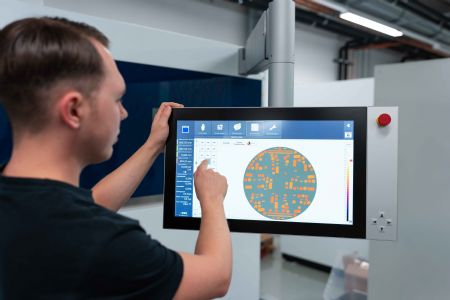
The semiconductor industry requires machines that work with optimal precision and repeatability with performance specifications in the nanometer range. The smallest of deviations can lead to defective chips, or very expensive scrap. This is where the additive manufacturing (AM) technology offered by Trumpf can make semiconductor manufacturing systems more precise and efficient.
Marco Andreetta, responsible for the semiconductor industry at
Trumpf, said: “Semiconductor manufacturers can reduce scrap and cut costs with AM technology. The innovative approach of using AM parts enhances the functionality and precision of semiconductor manufacturing machines and paves the way for more efficient production processes.”
At
Formnext 2024, the leading trade show for additive manufacturing, taking place in Frankfurt from 19-22 November 2024, Trumpf will showcase a variety of AM sample parts, such as manifolds used in water and gas lines of semiconductor manufacturing equipment.
The complex machines in the chip industry depend on the precision of each individual component and fluid and gas manifolds are fine examples. Because of their design, the traditional manufacture of complex fluid manifolds resulted in large, heavy parts that have abrupt fluid flow and stagnant zones and could be prone to leakage. The resulting pressure drops and flow-induced vibration have a negative influence on the semiconductor capital equipment.
Mr Andreetta said: “With AM technology, suppliers of semiconductor capital equipment can avoid the traditional complex manufacturing assembly and consolidate several parts into one, improving yield and reliability.”
High-performance demandsThe optimisation of the manifolds leads to more efficient and robust components, ultimately improving the overall performance of semiconductor manufacturing machines. Trumpf’s AM technology enables the production of components for semiconductor machines with enhanced stiffness and reduced weight, crucial for the high-performance demands of the sector.

For example, AM-manufactured fluid manifolds have fewer pressure drops, mechanical disturbances and lower flow-induced vibration. The geometrical freedom of AM can help reduce possible leakage points and increase part performance and reliability. The quality required for parts used in semiconductor manufacturing machines is unparalleled, and a challenge for any manufacturing technology. With its monitoring solution for 3-D printing, Trumpf makes it possible to fulfill these requirements with automatic multi-laser alignment (AMA) and melt pool monitoring.
AMA offers Trumpf TruPrint users fully automated online monitoring and correction of the positioning of the laser beam paths in relation to each other – accurate down to a few micrometers. Trumpf will premiere the second release of the AMA system at
Formnext 2024, taking place in Frankfurt next week (19-22 November), which enables faster acquisition and finer correction. The patented system visually acquires the position of master and slave and corrects the second one. The procedure is performed between the production of individual layers, with an interval set by the user.
Trumpf technology also monitors the melt pool live during the printing process. Mr Andretta concluded: “This not only ensures quality, but also potentially reduces costs.” This is possible because live monitoring of the melt pool during the manufacturing process could reduce expensive non-destructive tests (NDT) such as a computer tomography (CT) scan of the component after production.